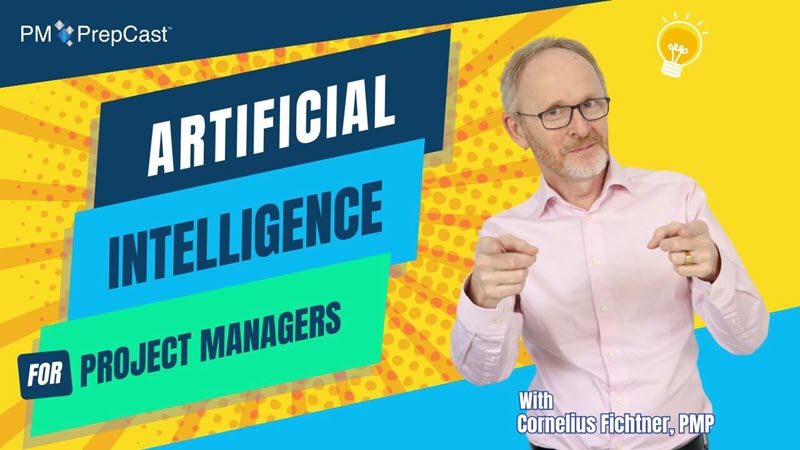Episode 363: Supportive Leadership (Free)
This episode is sponsored by The PM PrepCast for PMP Exam Prep:

Have you heard of supportive leadership? I certainly had not. I knew what servant leadership was, but the concept of supportive leadership was a definite unknown.
But that changed when Joseph Flahiff (www.whitewaterprojects.com -- www.linkedin.com/in/josephflahiff) got in touch with me and suggested this interview. I was intrigued.
The good news is that Joseph is a prolific writer who has a number of articles on the topic. He reviews the concept from various angles and he also has a number of great examples of how he works with his customers to implement supportive leadership in their organizations and how he uses the concept as a project leader himself. In this edition of our leadership podcasts series you’ll learn how to incorporate all of this as part of your own project leadership almost right away.
And of course we will also touch upon the main difference between supportive leadership and servant leadership. You’ll be just as surprised as I was.
Below are the first few pages of the transcript. The complete transcript is available to Premium subscribers only.
Podcast Introduction
Cornelius Fichtner: Hello and welcome to Episode #363. This is The Project Management Podcast™ at www.pm-podcast.com and I'm Cornelius Fichtner.
Have you heard of supportive leadership? I certainly had not.I knew what servant leadership was, but the concept of supportive leadership--that was a definite unknown. But that changed when Joseph Flahiff got in touch with me and suggested this interview. I was intrigued.
The good news is that Joseph is a prolific writer who has a number of articles on the topic. He reviews the concept from various angles and he also has a number of great examples of how he works with his customers to implement supportive leadership in their organizations and how he uses the concept as a project leader himself. You'll be able to incorporate all of this as part of your own project leadership almost right away. And, of course, we will also touch upon the main difference between supportive leadership and servant leadership. You'll probably be just as surprised as I was.
And now, enjoy the interview.
Podcast Interview
Female Voice: The Project Management Podcast's feature interview: Today with Joseph Flahiff, project management author, consultant and organizational alchemist.
Cornelius Fichtner: Hello, Joseph! Welcome back to the podcast.
Joseph Flahiff: Hey Cornelius, thank you. Pleasure to be here.
Cornelius Fichtner: So, supportive leadership is our topic today, but let me skip all the way to the end of our conversation. What is going to be the big takeaway that our listeners will learn from this discussion?
Joseph Flahiff: I think the big takeaway will actually depend on where the listener is coming from. So, they'll either hear a completely new or, at least, a slightly new, different approach to leadership; or they will be hearing something that maybe confirms and gives them more language to speak about what they feel internally already.
Cornelius Fichtner: So, is supportive leadership something new?
Joseph Flahiff: Is supportive leadership new? It's not really necessarily new per se, but I've put a language and a framework around some things that I've always done and that I've seen work well in my clients. So, in that sense, as a thing it's relatively new. There's a million forms of leadership, and we're all trying to describe what great leadership looks like, and how we see great leaders act, so this is my framework for describing how great leaders work.
Cornelius Fichtner: And talking how you describe this, you wrote several articles about supportive leadership and in them you talk about supportive leadership mostly in the context of line management and operations management. Does it translate over into project management?
Joseph Flahiff: Absolutely. Actually, that's where I come from--the project management world--so, that's actually where I cut my teeth on leadership in project management and it definitely applies very directly into what we do as project managers.
Cornelius Fichtner: Well then, let's explore this further. Can you give us an example of how traditional leadership in action would work? And then maybe follow it by how we would manage a similar project situation using supportive leadership?
Joseph Flahiff: Sure. I'll give an example of a form of traditional leadership. There's as many forms of leadership as there are people who lead. So, commonly, in the past century or so, leadership has been formed around leaders in hierarchical organizations in deciding what to do in a particular situation. So, if you were on a project--say you were building a building. A traditional leader in that context would say, "We're going to build this building, here's the thing that I want it to be," and would give the direction of that.
As a project manager, say you're a project manager who's in charge of the project management of the IT component within that building that's being built. So, you would have a scope that you're handed and then you would break that work down, and give that work to the individuals on the team, and maybe work with their managers to assign them to the particular work that they're doing and make sure that they execute on it. That's kind of a traditional model for leading, right? Tell them what to do, make sure that it's happening, follow up, maybe encourage them as you're going along.
The more supportive leadership model of that says, you know: your job as a leader is to make the other people successful. So, it is not as much to drive the project to completion, as it is to align the people on your team, or within your organization, so that they can feel the empowerment to actually do that.
Now, empowerment is a massively overused term, but I use it very carefully. I've written in a couple of different places where I talk about that you can't actually empower anyone, you can only offer them opportunities for them to take on empowerment. So, empowerment is a big part of the supportive leadership model, because you want to hand over, to the people who are actually doing the work, the decisions and the decision-making.
So, in that model where you're the project manager and you're in charge of executing the IT components within the construction project, your sub-component project., you would be then more facilitating these other people doing great work. Your job as the leader, then, is to yes! absolutely help communicate the vision of where you're going and to help define, "Hey, these are the parameters that we have to work within." But within that, then, allow the people who are doing the work to be the decision-makers on the work. And I think that's where the big differentiator is: it's between a more traditional approach and the supportive leadership model. Where are decisions made?
Cornelius Fichtner: This brings up a totally different question. It has to do with strong leadership, because everybody wants a strong leader, somebody who makes things happen. But, the way you've explained it, and the word supportive leadership itself evokes terms like subordinate, subservient, maybe servant leadership. So, can a supportive leader be strong?
Joseph Flahiff: Absolutely. I would say you actually have to be strong. I would say it actually take a stronger leader to be a supportive leader than it does to be a directive leader, because it takes a lot of strength of personality and guts to say, "I trust this team enough to hand off the decisions. I'm not going to make them." You cannot be--you cannot tell someone, "You have the authority and the responsibility and the ownership of this. You go make the decision." And then turn back on them. My wife and I have a great little word picture that we use to describe this. We talk about "who's got the rock." You cannot both be holding a rock at the same time. If it's in my hand, it's in my hand. If I hand it to you, it is in yours. That rock is now yours, and you are totally accountable, responsible and have the authority to make decisions about it. Not me, you. So, can you be a strong leader? Yes! It takes a lot of strength to say, "I am going to support these people as they make the decisions and stand behind them and grow them so that they can make better decisions. Maybe they're not strong enough yet to make these decisions, so we're going to help them grow to make even better decisions than I would."
Cornelius Fichtner: Can you maybe give us an example about how you personally used supportive leadership on your own projects?
Joseph Flahiff: Sure!
Cornelius Fichtner: How you "handed the rock over," to use your words.
Joseph Flahiff: Well, I was using the analogy, or the example, earlier of being the IT person on a construction project only because I was. I was working at the Fred Hutchinson Cancer Research Center about, oh, a decade ago. And I only use that example because it's very clear.
I've been doing lots of projects since then, but a very clear distinction between the two. I met with the project team to decide how were we going to execute this work. And the team was pretty used to being told what to do, like "Here's the work we need to have done. You do this part, you do that part, you do that part, go!" And my approach was to bring the group together and say, "OK! We've been given the charge to have this much technology go in: these are the number of outlets and the number of people and all the parameters of the building that we were building. Here's the budget we've got. You all are the smart people who do this for a living, help me. What is the plan going to be?"
And as the project manager for that, I facilitated their discussion amongst themselves and helped them come up with the plan. So, having them actually being the ones driving it and leading each other in different moments of the conversation--that was one example of when I had the opportunity to practice supportive leadership
Cornelius Fichtner: What do you like about using supportive leadership?
Above are the first few pages of the transcript. The complete transcript is available to Premium subscribers only. Please subscribe to our Premium Podcast to receive a PDF transcript.
PDUs: Power Skills, Supportive Leadership, Servant Leadership
- Last updated on .


